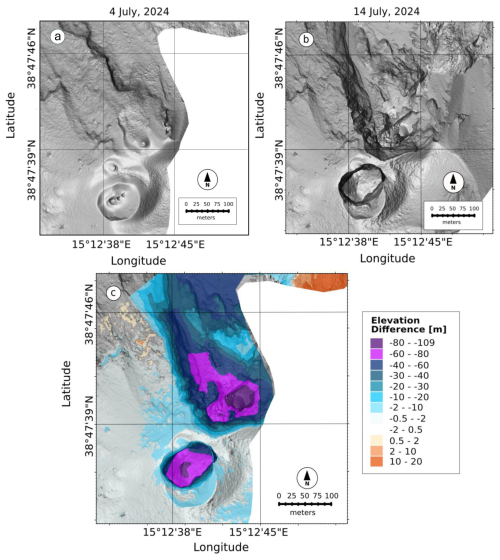Geophysical fingerprint of the 4–11 July 2024 eruptive activity at Stromboli volcano, Italy

Zuccarello L., D. Gheri, S. De Angelis, R. Civico, T. Ricci, and P. Scarlato, (2025).
Natural Hazards and Earth System Sciences, 25(7), 2317–2330. https://doi.org/10.5194/nhess-25-2317-2025
Abstract
Paroxysmal eruptions, characterized by sudden and vigorous explosive activity, are frequent at open-vent volcanoes. Stromboli volcano, Italy, is well known for its nearly continuous degassing activity and mild explosions from the summit craters, occasionally punctuated by short-lived paroxysms. Here, we analyse multiparameter geophysical data recorded at Stromboli in early July 2024 during a period of activity that led to a paroxysmal eruption on 11 July. We use seismic, infrasound and ground deformation data, complemented by visual and unoccupied aircraft system observations, to identify key geophysical precursors to the explosive activity and to reconstruct the sequence of events. Elevated levels of volcanic tremor and very long period seismicity accompanied moderate explosive activity, lava emission and small collapses from the north crater, leading to a major explosion on 4 July 2024, at 12:16 UTC. Collapse activity from the north crater area continued throughout 7 July, while effusive activity occurred from two closely spaced vents located within Sciara del Fuoco, on the northwest flank of the volcano. On 11 July, a rapid increase in ground deformation preceded, by approximately 10 min, a paroxysmal event at 12:08 UTC; the explosion produced a 5 km high eruptive column and pyroclastic density currents along Sciara del Fuoco. Our observations suggest that the early activity in July was linked to eruption of resident magma within the shallowest parts of the volcano plumbing. This was followed by lowering of the magma level within the conduit system as confirmed by the location of newly opened effusive vents. Rapid ground deformation before the paroxysmal explosion on 11 July is consistent with the expansion of a gas-rich magma rising from depth, similar to past energetic explosive events at Stromboli. Our findings offer valuable insights into Stromboli’s eruptive dynamics and other open-conduit volcanoes, highlighting the importance of integrated geophysical observations for understanding eruption dynamics forecasting, and associated risk mitigation.



Devi effettuare l'accesso per postare un commento.